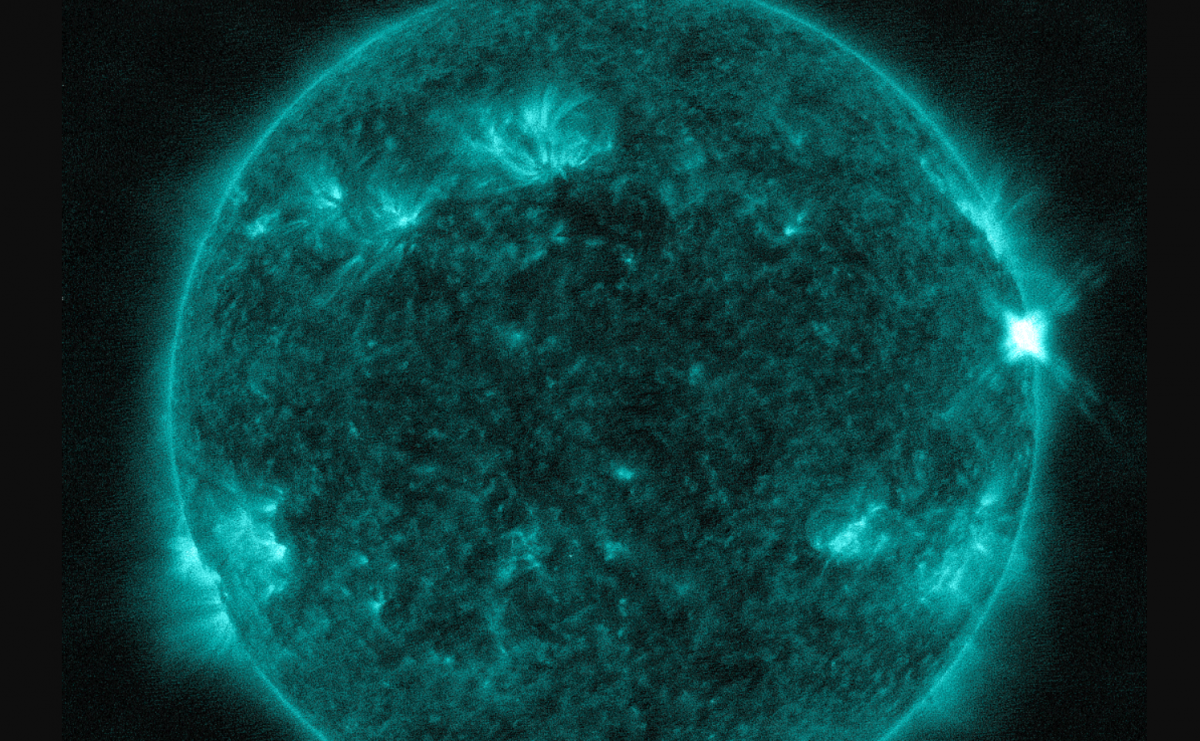NASA has released images of a powerful burst of energy that erupted from the sun on Thursday this week.
The solar flare, seen below as a bright flash of ultraviolet light on the right hand side of the sun, was classified as an M5.5-level flare, which is listed as moderately strong by the National Oceanic and Atmospheric Administration's Space Weather Prediction Center (SWPC).
The Sun emitted a significant solar flare early this morning, peaking at 1:01 a.m. ET. NASA’s Solar Dynamics Observatory captured an image of the event, which was classified as M5.5.https://t.co/9RsMR5suI3 pic.twitter.com/zK9mADK47H
— NASA Sun & Space (@NASASun) January 20, 2022
M-class flares are the second-highest type behind X-class flares, which can go all the way up to X20, representing an extreme solar flare event.
Blasts of solar energy are of concern to the scientific community and the wider world because they can impact radio communication, power grids, navigation signals and even pose health hazards to spacecraft and astronauts due to increased levels of radiation.
Thursday's solar flare was strong enough to have caused a limited blackout of high frequency radio communications and the loss of radio contact for tens of minutes in certain areas, according to the SWPC. It's not clear whether any such disruption was reported.
On its alerts page, the SWPC said the same day that there may have been an "increased biological risk" to astronauts or passengers and crew in high altitude flights due to solar activity.
The alert also stated that energetic particles might represent an increased risk to satellite systems that are susceptible to them. Another alert stated that "sensitive receivers including radar, GPS, and satellite communications" may experience some interference.
"The Sun emitted a significant solar flare early this morning, peaking at 1:01 a.m. ET," NASA said via its Sun & Space Twitter account.
Solar flares are huge explosions in the atmosphere of the sun, caused by the sudden release of magnetic energy that gets built up in the sun's constantly moving magnetic fields. These explosions can accelerate solar particles to almost the speed of light.
Solar flares are often associated with, but not to be confused with, coronal mass ejections (CMEs). These are huge bubbles of electrified gas that are hurled into space sometimes at hundreds of miles per second that can cause disruption if they interact with Earth's magnetic field.
Light and radiation from solar flares can reach Earth in minutes, but CMEs tend to travel a lot more slowly, sometimes taking three days to reach us. Both can cause navigation and communication disruption.
Some solar activity is so strong that it can cause lengthy geomagnetic storms due to disturbances in the Earth's magnetic field. The Carrington Event, perhaps the most powerful solar storm in history, occurred in 1859 causing bright auroras in unusual locations and a breakdown in telegraph communications.
Solar activity made headlines last October after Earth experienced a geomagnetic storm caused by a CME.

Uncommon Knowledge
Newsweek is committed to challenging conventional wisdom and finding connections in the search for common ground.
Newsweek is committed to challenging conventional wisdom and finding connections in the search for common ground.
About the writer
To read how Newsweek uses AI as a newsroom tool, Click here.








